Resources used: (‘No Film School), (‘StudioBinder’), (‘Premium Beat’), (‘Aputure’), (Kriscoart’ on YouTube)
When lighting scenes in a film, certain things can be used when considering character and story:
- ‘The eye is drawn to the brightest part of the frame so make sure your lighting communicates that such as when looking at an important object, person etc. If you need the audience to see something, lighting can influence where they are looking.’
- ‘Lighting can be used to foreshadow a characters motives in the film.
- Lighting can be used to differentiate between two types of character; good and evil.
- Match the quality of light used with the emotional impact of that scene. Soft lighting for scenes where characters are joyful or emotionally fulfilled. Hard lighting communicates difficult or dark times.
- Use Colour to push emotions.
- Consider depth. Light what the character can see.’
Considering Colour
Colours impact the way in which people view certain things or people and establish the mood of a scene. Three factors when determining colour:
- ‘Hue – The colour itself
- Saturation – The intensity of the colour (Can create a contrast)
- Brightness – How light or dark the colour is’ (Bright images often seem lively and exciting while darker images seem dramatic)
Association of Colour:
RED – Passion, Danger, Anger, Vengeance, Violence etc.
ORANGE – Warning, Warmth, Growth etc.
YELLOW – Value, Power, Enlightenment, Success etc.
GREEN – Growth, Sickness, Decay, Luck, Jealousy, Envy etc.
BLUE – Tranquility, Loyalty, Sadness, Cleanliness, Distance etc.
PURPLE – Wealth, Wisdom, Arrogance
BROWN – Earth, Home, Comfort etc.
BLACK – The Unknown, Power, Mystery, Fear, Remorse etc.
WHITE – Clarity, Reflection, Youth, Innocence, Purity etc.

Colour schemes:
Complementary – Two colours on the colour wheel opposite from each other. Creates contrast and a visually striking image.
Dominant Colour – One colour more prevalent in the shot which help to draw attention to certain things, with a secondary colour contrasting this colour.
Analogous – 3 or sometimes 4 colours that are next to each other on the colour wheel (Pleasing to the eye and often very relaxing)
Monochromatic – 1 colour from the colour wheel used
Triadic – On the colour wheel, 3 colours, separated by 3 colours in between them in the circle.
‘The 3 point lighting setup is the most basic and common type of lighting technique, utilising a key light, fill light, and back light that sets the subject apart from the background of the frame.‘
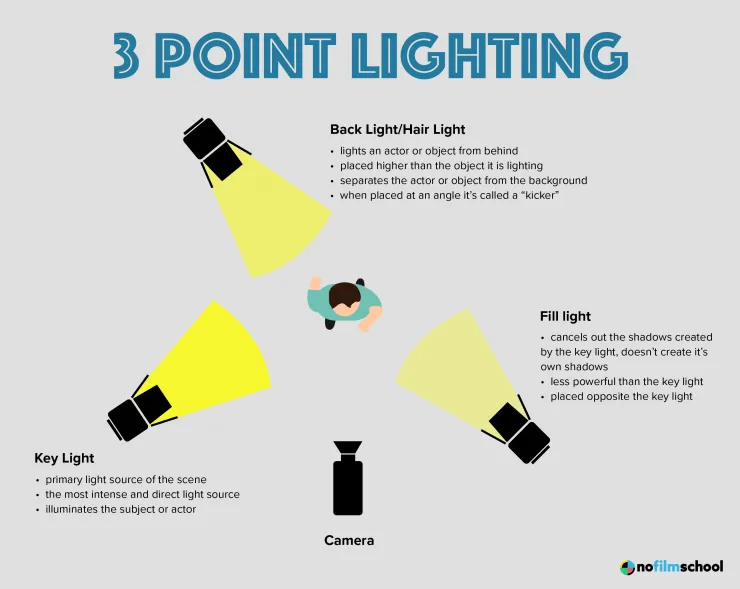
‘Most of the time you will want to flank the camera with the key light and fill light at an angle of roughly 60 degrees‘
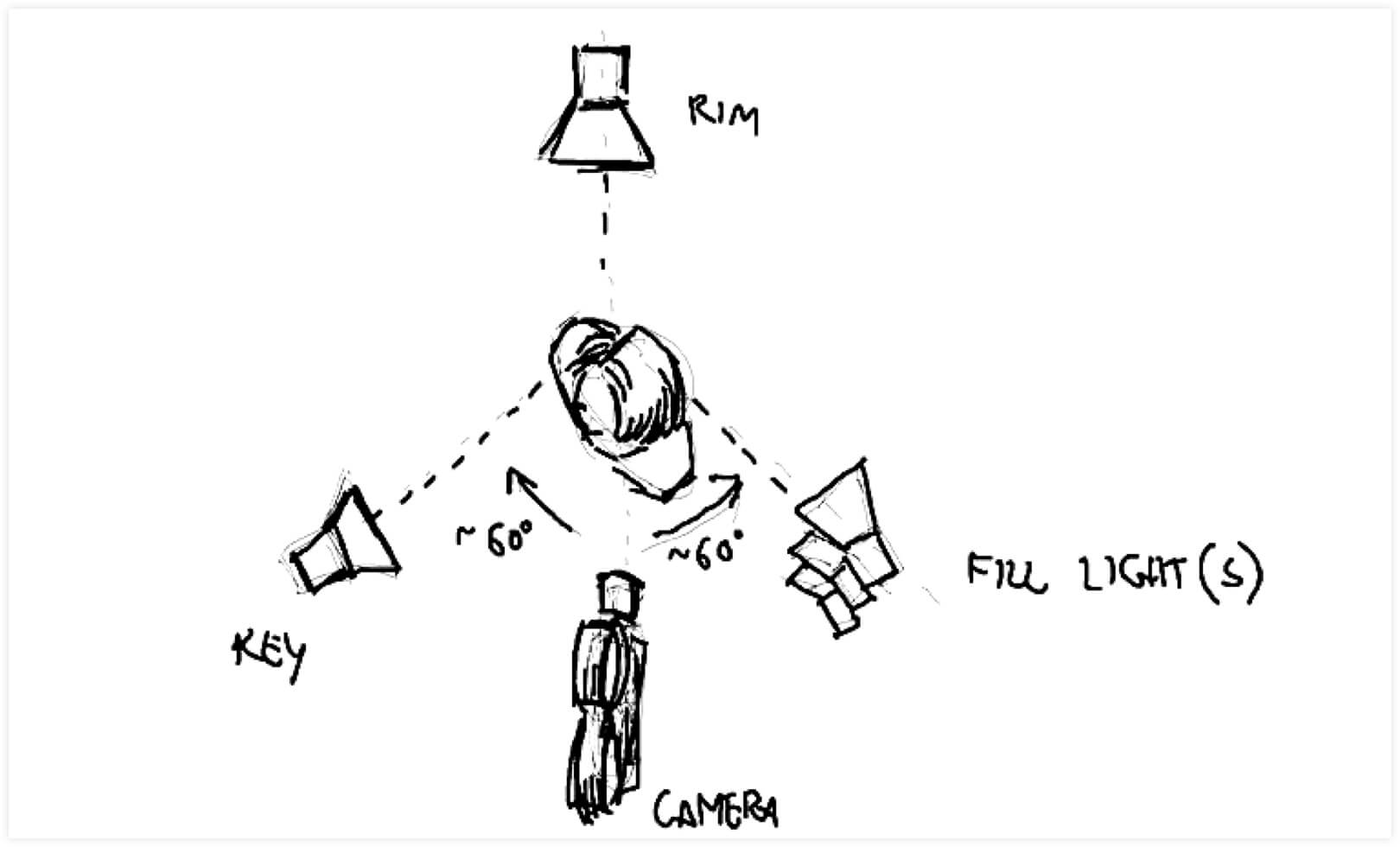
Film Editing Techniques
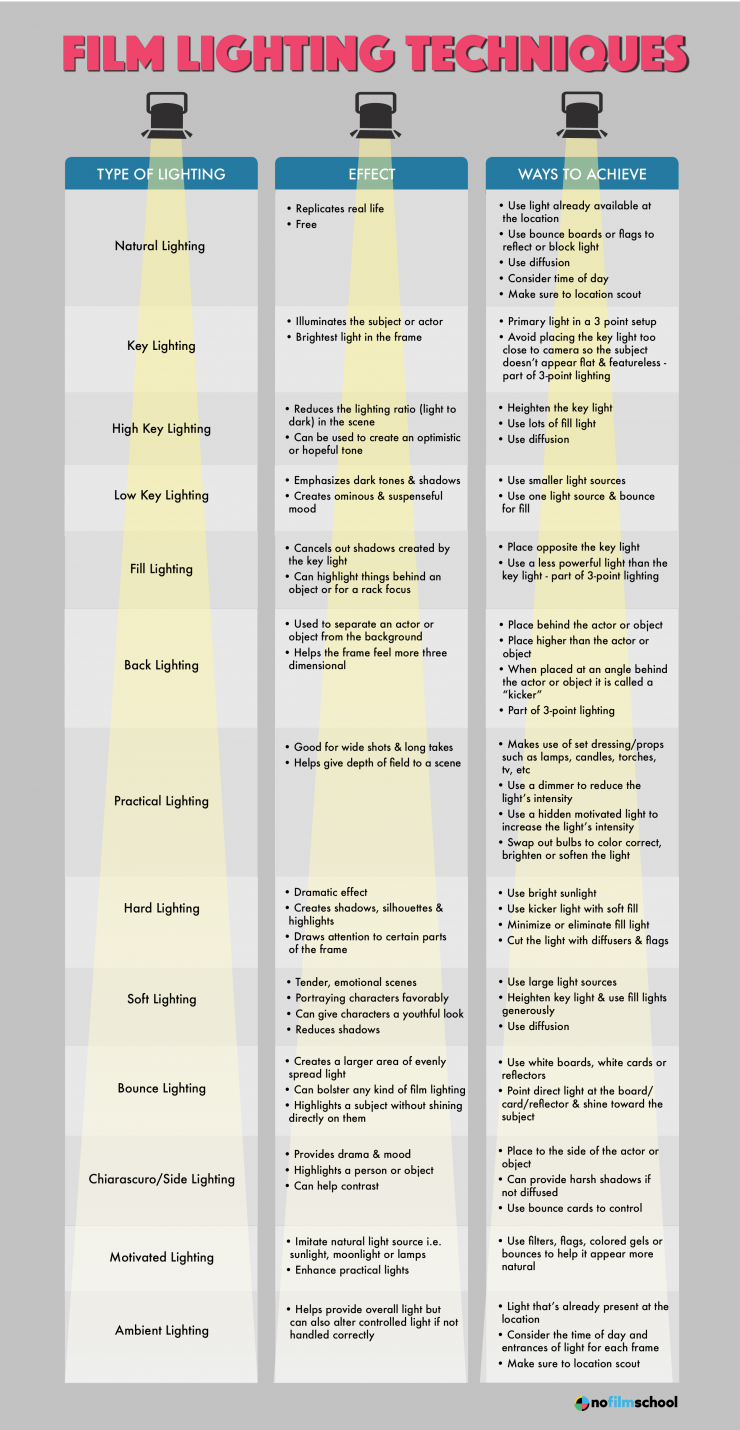
Examples of different types of film lighting techniques:
Natural Lighting
‘Natural lighting is about using the light that’s already available at the time of filming and the location that is in use.’
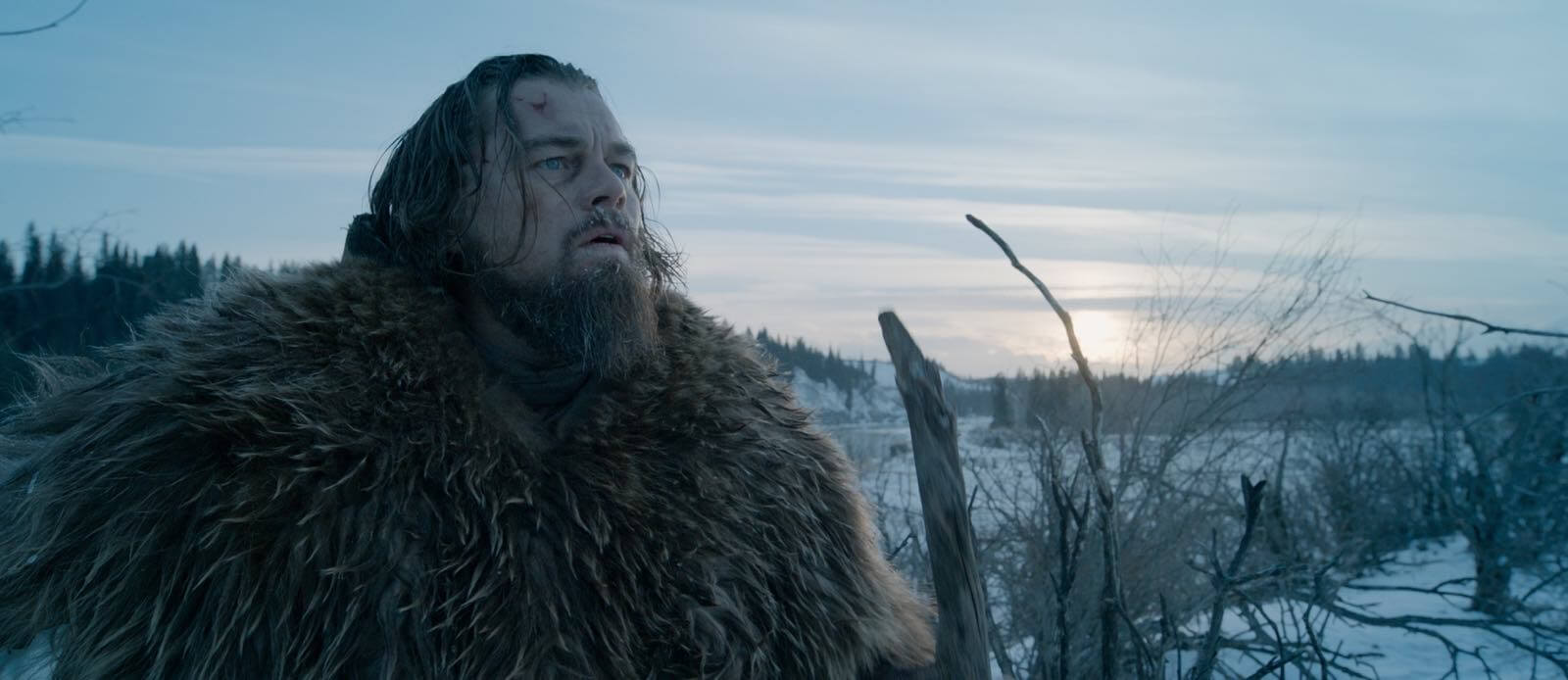
Key Lighting
‘The key light is the primary source of light when shooting a scene and will usually light either the actor or another subject. It is the brightest and most important light in the frame.’

High Key Lighting
‘Reduces the lighting ratio in order to change the mood and tone of a specific scene. Created by heightening the key light and an increased use of fill lights which results in virtually no shadows being present at the light on all subjects being balanced.’
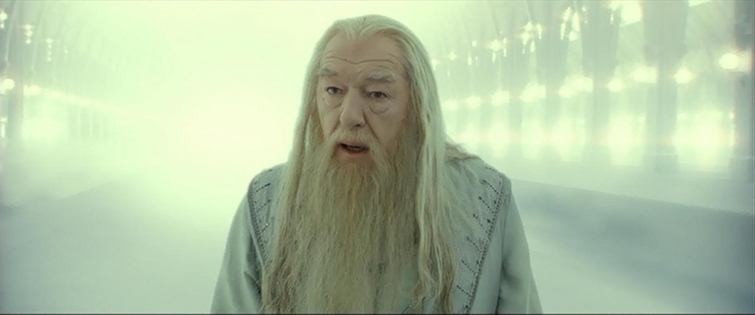
Low Key Lighting
‘Removing entirely or slightly the amount of fill light in a shot so that its shadowy which creates dramatic and menacing looking scenes.’

Fill Lighting
‘The purpose of a fill light is to remove the shadows created by the key light. Its a lot less brighter than the key light.’
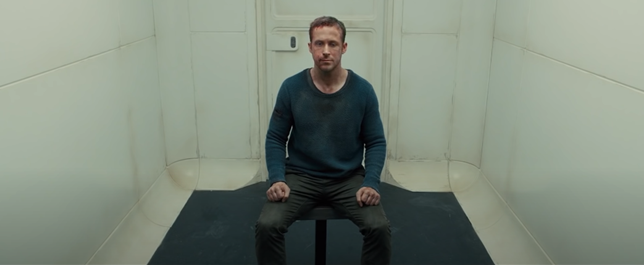
Back Lighting
‘The backlight will hit the subject/s of the frame from behind them to give a more three-dimensional appearance, separating the subject of the shot from a dark background.’

Practical Lighting
‘Using existing light sources in frame such as lamps, candles etc. Mainly used when there is a lot of movement in a scene and the shot choices are wider and show off a greater amount of the set. Often used in cohesion with other lighting techniques such as soft lighting so that the light is more balanced.’
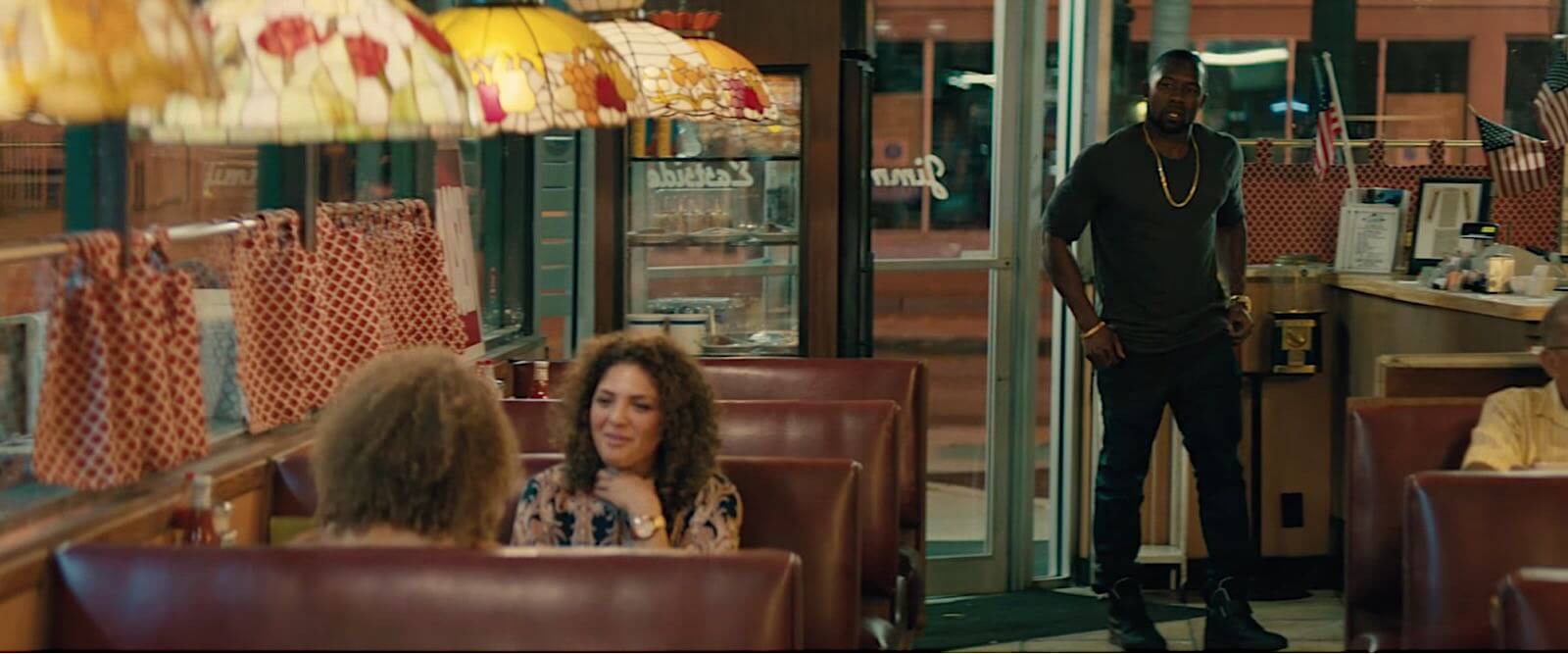
Hard Lighting
‘Created with a ‘direct beam from a light source’ creating shadows and silhouettes. Can highlight anything that is in the frame.’
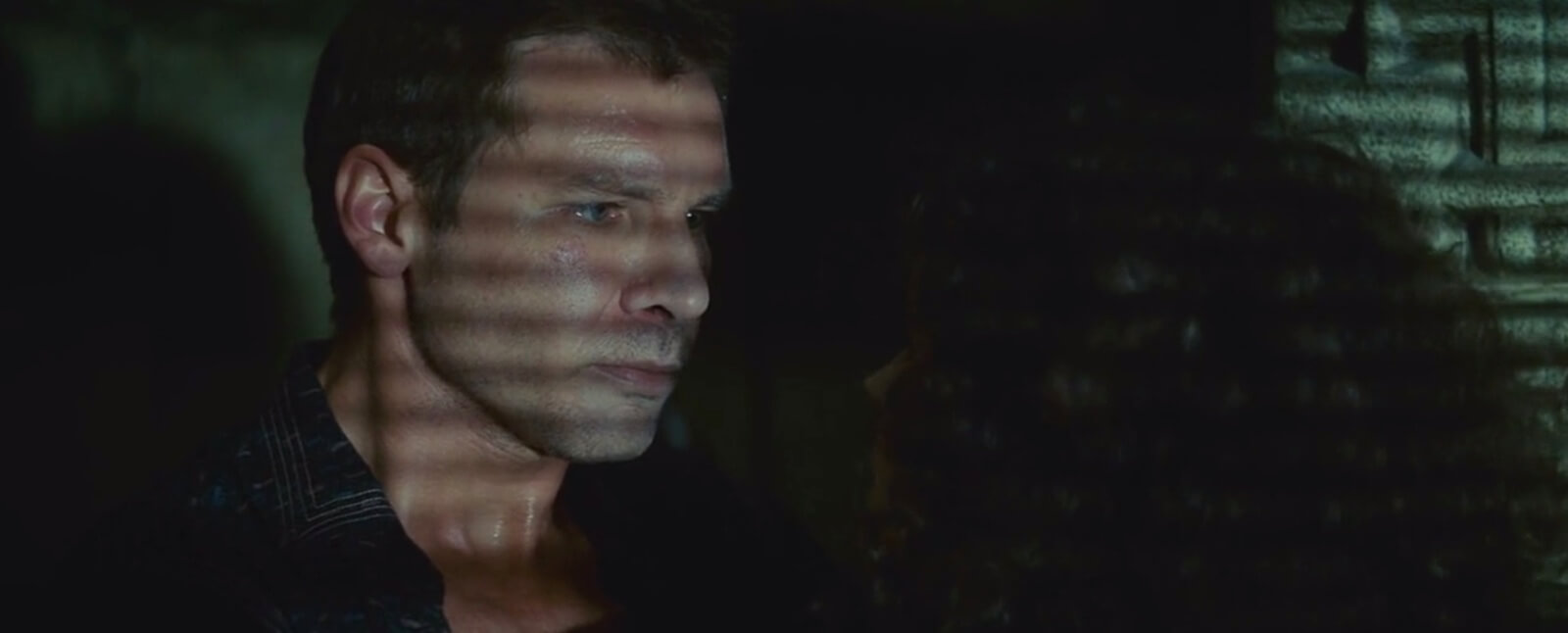
Soft Lighting
‘Whether a scene has hard or soft light is determined by the size of the light source. Its used to remove shadows from a scene and gives the impression that light is coming from sources in the characters world.’

Bounce Lighting
‘Light that has been reflected such as with reflectors, foam boards, or the surface of a wall or ceiling in a room. Reflectors can create a hard light depending on the distance from the light source while foam boards have a soft light.’

Side Lighting
‘The light that enters the frame from the side. Often used for creating a dramatic mood. They are good for showing texture and “for better dynamic lighting, it is best to use it without a fill or have the fill ratio very low such as 1:8”.’
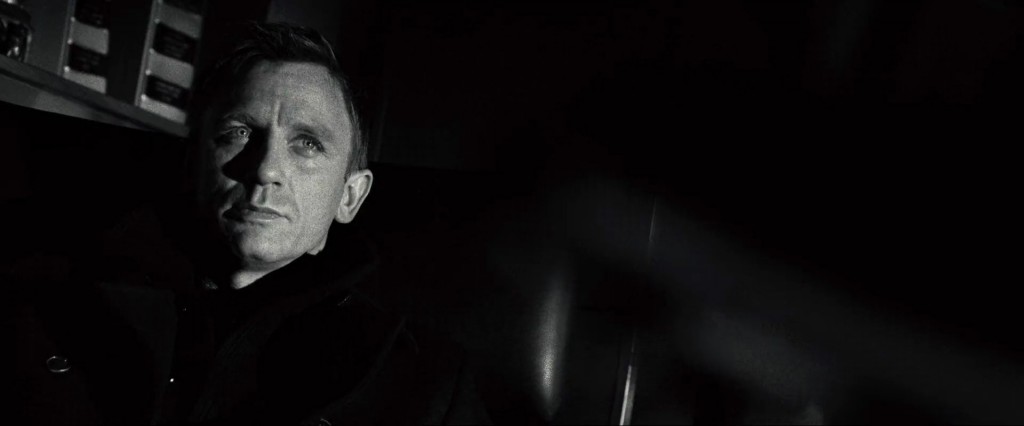
Motivated Lighting
‘The imitation of natural light when the scene is otherwise in a location where there is none available. Some might increase the effect of the practical lights already present.’

Ambient Lighting
‘Ambient light is the light that is always present unless the scene is completely dark. Ambient light will change according to the time of day when shooting.’

My Film:
I am considering taking inspiration from the short film ‘Stutterer’. I like the use of natural lighting when shooting in dark areas which is sometimes assisted by the use of a fill light. This will be useful for my film as I am shooting exclusively at night so i will require natural lighting such as street lights and a fill light when a clear natural lighting source cannot be found or placed into the scene, specifically when the husband walks from the ext. of the house to the int. of the car.
In ‘Connect’, I might plan to use the bokeh film lighting style when looking at the headlights of cars, especially in the ending where the husband looks off into the distance at the approaching cars as it provides a disorientating effect.